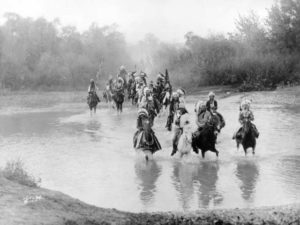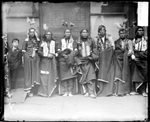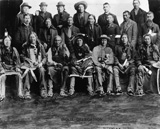Dakota Territory, where the city of Canton was eventually established, embraced the Mandan, Arikara, Kidatsa, Assiniboin, Crow, Cheyenne, Cree, and Dakota (Santee Sioux) tribes. The Lakota Sioux were openly hostile to white newcomers, and even the early trappers avoided their sacred land in the Black Hills. Things changed when pioneer families came in and railroads began to snake through the countryside. Railroad workers arrived in hordes to cut through previously untouched land. People who had heard rumors about gold sometimes sneaked into the Black Hills.
The Lakota Nations were important to peace in the region, and in the Fort Laramie Treaty of 1868, the U.S. government granted them a huge parcel of land west of the Missouri River. The government forbade settlers or miners to enter the Black Hills without permission, and the Sioux agreed to stop fighting with the newcomers.
Some people inevitably broke the treaty, and inevitably there were clashes. One Sioux retaliation tactic was to raid settlements and then retreat to the Black Hills where they were protected from pursuit by their treaty. The military wanted a fort in the area to better their chances of cutting off the Sioux before they could get to the Black Hills. That desire for a fort changed everything.
My next post will discuss what happened when the government pursued building a fort in the area.
________________________________________________________________________



